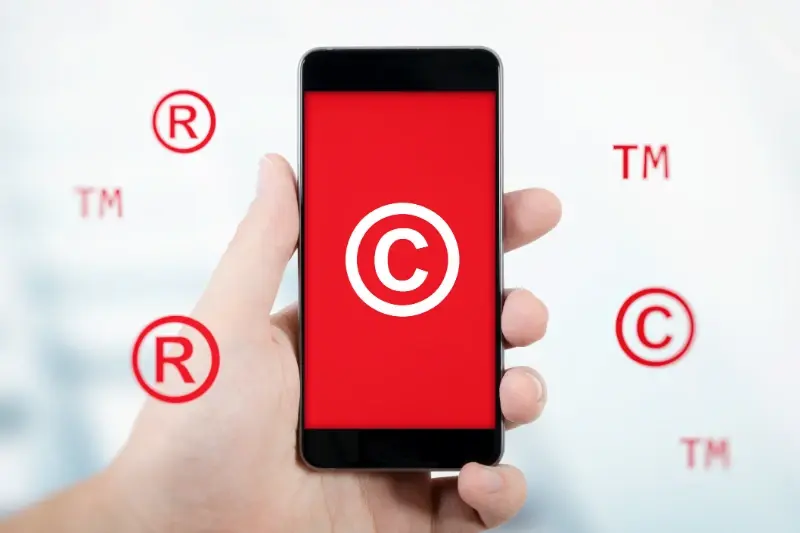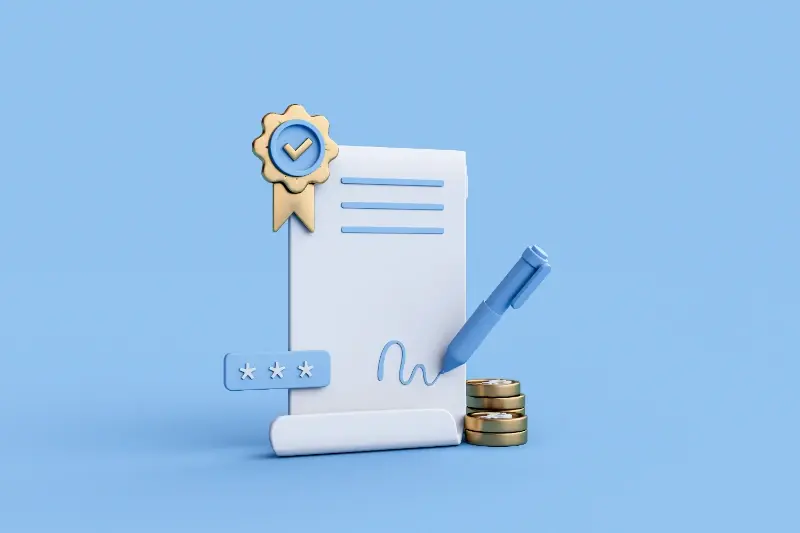Trademark Clearance Checklist for Mobile App Developers
Have you ever spent months developing the perfect mobile app, only to discover that someone else owns the trademark to your brilliant name? I've watched countless developers face this nightmare scenario, and trust me, it's not something you want to experience firsthand. Trademark clearance might sound like boring legal stuff, but it's actually one of the most important steps in your app development journey—and one that too many people skip entirely.
When you're deep in the excitement of building your next big app idea, it's tempting to rush straight into coding and design. After all, that's the fun bit, right? But here's what I've learned after years in the mobile app development game: getting your intellectual property sorted early saves you from massive headaches later. We're talking about protecting your app branding, your business identity, and potentially thousands of pounds in legal fees.
The best time to think about trademark clearance is before you fall in love with your app name, not after you've built your entire brand around it
This comprehensive trademark clearance checklist will walk you through everything you need to know as a mobile app developer. We'll cover the basics of trademark law, show you how to conduct proper trademark searches, and guide you through the entire process from initial research to filing your application. Whether you're a solo developer working on your first app or part of a larger team, understanding these steps will help protect your hard work and give you peace of mind as you build your business.
Understanding Trademark Basics for Apps
Trademarks protect the names, logos, and symbols that identify your mobile app in the marketplace. Think of them as your app's identity card—they tell people who made the app and help users distinguish your product from competitors. Without proper trademark protection, someone else could potentially use a similar name or logo, causing confusion amongst your users.
For mobile apps, trademarks typically cover your app name, logo, tagline, and any unique visual elements that represent your brand. The key thing to understand is that trademarks exist to prevent consumer confusion; if two apps have similar names or visual branding, users might mistakenly download the wrong one or think they're made by the same company.
Types of Trademarks Relevant to Apps
There are several types of trademarks that app developers need to consider. Word marks protect the actual text of your app name, whilst design marks protect logos and visual elements. You might also encounter composite marks, which combine both text and design elements together.
- Word marks: Protect your app name in plain text
- Design marks: Cover logos, icons, and visual branding
- Composite marks: Combine text and design elements
- Sound marks: Protect distinctive audio elements (less common for apps)
Trademark Classes for Mobile Apps
Trademarks are registered within specific classes that define what products or services they cover. Mobile apps typically fall under Class 9 for downloadable software or Class 42 for software as a service. Some apps might need protection in multiple classes—for example, a gaming app might also want protection in Class 41 for entertainment services. Understanding which classes apply to your app is important because trademark protection only extends to the classes you've registered in.
Conducting Your Initial Trademark Search
Before you invest serious money in professional searches, you need to do your homework. I always tell my clients to start with the basics—a simple Google search of your proposed app name. You'd be surprised how many potential conflicts you can spot just by typing your app name into a search engine and seeing what comes up.
The UK Intellectual Property Office website offers a free trademark search tool that's perfect for beginners. It's straightforward to use and gives you a good sense of what's already registered in your category. Don't limit yourself to exact matches though; look for similar names, phonetically similar words, or anything that might cause confusion in the marketplace.
Key Areas to Check During Your Initial Search
- App stores (both Google Play and Apple App Store)
- Social media platforms and usernames
- Domain name availability
- Company registrations at Companies House
- Existing websites using similar names
- UK trademark database for your app's category
Start your search broad, then narrow it down. Look at Class 9 (computer software) and Class 42 (software development services) in the trademark database, but don't forget other relevant classes that might apply to your app's specific function.
Keep detailed notes of everything you find. Screenshot relevant results, save URLs, and document dates. This initial research will save you time and money later when you move to professional searches. If your initial search reveals obvious conflicts, it's better to pivot your branding strategy now rather than after you've built your entire marketing plan around a name you can't legally use.
Professional Trademark Database Searches
Right, so you've done your basic searches and think you're in the clear. But here's where things get serious—and where most app developers make a costly mistake. Those free searches you did earlier? They're just scratching the surface. Professional trademark database searches dig much deeper and can save you from legal headaches down the road.
A comprehensive professional search doesn't just look at registered trademarks; it examines pending applications, abandoned marks that might still have rights, and even common law trademarks that were never formally registered. This is the kind of thorough investigation that reveals potential conflicts you'd never spot on your own.
What Professional Searches Include
When trademark attorneys conduct professional searches, they're looking at multiple databases and sources that aren't available to the public. They check international databases, state trademark registers, and domain name registrations. They also search for phonetically similar names—because "AppTastic" and "App-Tastic" could still cause you problems legally.
- Federal trademark databases in multiple countries
- State and provincial trademark registers
- Common law trademark sources
- Pending applications and opposition proceedings
- Domain name registrations and business directories
- App store listings and social media handles
The cost for professional trademark searches typically ranges from £300 to £800, depending on how comprehensive you need them to be. Yes, it's an investment, but think about it this way: rebranding your app after launch because of trademark issues will cost thousands more. Professional searches also come with detailed reports that help you understand not just what conflicts exist, but how serious they are and what your options might be.
Evaluating Trademark Conflicts and Risks
Once you've completed your trademark search, the real detective work begins. You'll need to examine each potential conflict and decide whether it poses a genuine threat to your mobile app's branding strategy. This isn't always straightforward—trademark law operates in shades of grey rather than black and white.
Start by looking at the goods and services covered by existing trademarks. A trademark for "Phoenix" registered for restaurant services won't necessarily block your fitness app from using the same name. Trademarks are category-specific, which means you need to focus on marks in similar or related fields. Software, mobile applications, and digital services often overlap, so pay close attention to these areas.
Assessing Similarity Levels
The key question is whether consumers might get confused between your app and existing trademarks. Courts consider factors like visual similarity, phonetic similarity (how names sound), and conceptual similarity (what they mean). "BookMaster" and "BookMasters" would likely be considered too similar, but "BookMaster" and "PageTurner" might coexist peacefully.
The strength of an existing trademark directly impacts how much protection it receives against newcomers in the market
Understanding Risk Categories
Not all conflicts carry equal weight. Generic terms like "Fast" or "Easy" receive minimal protection, whilst distinctive invented words like "Kodak" or "Xerox" enjoy broad protection. Descriptive marks that describe what your app does—think "PhotoEditor" or "TaskManager"—fall somewhere in between. The stronger the existing trademark, the wider the protection zone around it, and the greater your risk of infringement claims.
Document your findings and reasoning for each potential conflict. This creates a clear audit trail and helps you make informed decisions about whether to proceed with your chosen name or pivot to something safer. If you're working with a development team, it's also worth understanding how to protect your app idea during the development process.
Filing Your Trademark Application
Right, so you've done your searches and you're confident your app name is clear. Time to file that trademark application—and this is where things get a bit more serious. The application process isn't particularly difficult, but getting it wrong can cost you time and money down the line.
You'll need to file with the Intellectual Property Office here in the UK if you're protecting your trademark domestically. For international protection, you're looking at filing in multiple jurisdictions or using the Madrid Protocol system, which lets you file in several countries through one application. Smart move if you're planning global expansion.
What You'll Need for Your Application
The application itself requires some specific information that you need to get right from the start. Missing details or incorrect classifications will slow everything down—trust me on this one.
- Your exact trademark (the app name, logo, or both)
- The correct Nice Classification classes for your services
- A clear description of what your app actually does
- Your business details and contact information
- The filing fee (varies depending on classes and jurisdictions)
Here's something that trips up loads of app developers: choosing the right trademark classes. Most mobile apps fall under Class 42 (software services) and Class 9 (downloadable software), but depending on what your app does, you might need additional classes. A food delivery app, for example, might need Class 39 for transport services too.
The Timeline and What Happens Next
Once filed, your application goes through examination—this takes several months in most jurisdictions. The trademark office will check if your mark conflicts with existing trademarks and whether it meets their requirements. If there are issues, they'll send you an examination report that you'll need to respond to within a set timeframe.
After examination comes publication, where other trademark owners can oppose your application if they think it conflicts with theirs. This opposition period typically runs for two to three months, and honestly, it's when you find out if you missed any potential conflicts in your initial search. This is also when you might encounter situations similar to having similar features to another app, but with branding instead.
Conclusion
Getting trademark clearance right isn't just about ticking boxes—it's about protecting the future of your mobile app. I've worked with developers who've had to rebrand their entire app after months of development because they skipped this step. Trust me, it's not a conversation you want to have with your client or stakeholders.
The trademark clearance process might seem overwhelming at first, but breaking it down into manageable steps makes it far less daunting. Start with your basic searches, move on to professional database checks, evaluate any potential conflicts honestly, and don't be afraid to seek legal advice when you need it. Yes, it takes time and yes, it costs money upfront—but it's nothing compared to the cost of changing everything later. Understanding the broader landscape of intellectual property protection, including the difference between copyright and patents for apps, will help you make more informed decisions.
What I find most developers underestimate is how creative you can be within the constraints of trademark law. Just because your first choice isn't available doesn't mean you can't find something even better. Some of the most successful apps I've worked on ended up with names that were second or third choices, and they turned out to be perfect for their brand. Learning from what top app development companies do can provide valuable insights into how established players handle branding decisions.
The mobile app market is competitive enough without having to worry about trademark disputes. By following this checklist, you're not just protecting your app—you're giving yourself the best possible start in a crowded marketplace. Your future self will thank you for doing the groundwork now rather than dealing with the headache later.
Share this
Subscribe To Our Blog
You May Also Like
These Related Stories

5 Copyright Mistakes That Could Kill Your App Launch

5 Intellectual Property Mistakes That Could Kill Your App Business





